If you travel to the mountains or snowy areas regularly, sooner or later you’re going to have to use tire chains. Start by getting the right set for your vehicle at your local Les Schwab.
Quick-fit chains are not your grandpa’s tire chains. They are MUCH simpler to put on and take off. Here are a video, step-by-step instructions, and driving safety tips for installing quick-fit tire chains on your vehicle.
When you need chains, driving conditions are nasty. Snow is coming down, passing traffic is spraying slush, dirty water is dripping off your wheel wells, the road is slick, and it may be dark. Don’t make this the first time you put on your chains.
Practice installing your new chains once BEFORE you travel. Take advantage of a dry garage or driveway to make sure your winter tire chains are the right size and you’re comfortable putting them on. If needed, the professionals at Les Schwab Tire Centers can help.
Put together a simple winter road trip safety kit with warm gloves, waterproof layers, and other items to make your winter driving more safe and comfortable. In the winter, always carry this emergency kit and tire chains in your vehicle.
Once you’re comfortable installing your chains, you’re ready to hit the snow.
Be Safe. If you’re on the road, pull off as far as possible onto a safe shoulder. Flip on your hazard lights. Put on your waterproof layers, hat, headlamp, and gloves from your winter road trip kit.
Identify the Correct Tires. If your vehicle is front-wheel drive, the chains go on the front. If it’s rear-wheel drive, chains go on the back. If it’s all-wheel drive, please check your owner’s manual. If you’re not sure, you can ask the experts at Les Schwab for help.
Pull Out Chains & Instructions. With your vehicle parked, open the bag and pull out your instructions and your first chain. Each bag comes with two chains. The plastic instruction mat that comes with your chains can be used as a barrier between you and the snow to keep you dry.
Untangle Your Chains. Holding them from the plastic-covered cable, make sure everything is straight and the chains are not looped over one another. Hold up your chains so the yellow end is in your left hand and the blue end is in your right.
The chains should hang loosely and the metal hooks seen along the yellow and blue sections should be facing away from you so they don’t damage your tires.
Place Chains onto Your Tire and Connect the Cable. Lay your chains on the ground and push them behind the tire, yellow cable end first, from the right side to the left.
Once the chains are centered behind the wheel, grab both ends and pull them up over the top of the tire. You should feel the chains against your axle.
This will allow you to easily connect the yellow and blue ends of the cable by slipping one end into the other and pulling them into place.
Connect the Red Hook. Now that the cable is connected on top, look for the red hook directly opposite the cable connection. Connect the red hook on the right to the first available gold link on the left.
Check the Diamond Shape. Push the connected chain over the top of the tire. You should see the diamond shape in the chains against your tire. Between each of those diamonds is the center rail, which should be placed down the middle of the tire tread.
Connect the Red Chain Along the Bottom. Now that the cable is connected on top, look for the red hook directly opposite the cable connection. Connect the red hook on the right to the first available gold link on the left. Push the connected chain over the top of the tire.
Now that the cable is connected on top, look for the red hook directly opposite the cable connection. Connect the red hook on the right to the first available gold link on the left. Push the connected chain over the top of the tire.
The bottom of the chains includes a red draw chain with bungee on your right, and a chain guide on the left. Pull these out towards yourself.
Take the long red chain and run it through the chain guide and pull as tight as you can with both hands. Don’t pull using the bungee. As you pull, one of the chain links will find its way into the notch on the red chain guide, locking it into place.
Using the bungee end of the red chain, pull it through one or both of the red loops and secure it to a gold-side chain opposite the red loops. If you can’t get it through both loops, that’s ok, pull tight through one and attach it to a side chain to the left of the loop.
Repeat on Second Tire.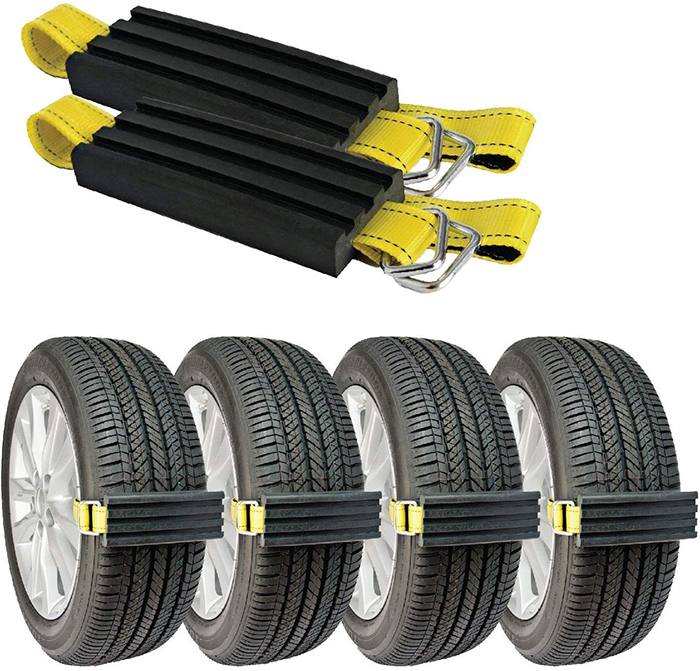 Repeat these steps to install chains on the other side of your vehicle.
Repeat these steps to install chains on the other side of your vehicle.
Drive Forward Slightly. The next step is to drive forward about 15 feet, or a full car length. This gives the chains a chance to relax and settle on your tires.
Re-tighten Chains. To take up any slack, unhook the rubber end of the red draw chain and pull it tight again. Once it’s tight, guide the red chain through the loops and, again, securely latch the bungee end to the gold-side chain.
The chains should be tight on the tire. And, be sure to stop if you hear them making any contact with your vehicle. If your chains are still loose, unhook the bungee and adjust the red hook straight across from the chain guide. Unhook and reattach to the tightest position on one of the three gold chain links. It’s okay if the extra links are hanging loosely. Now, you’re ready to reattach your bungee.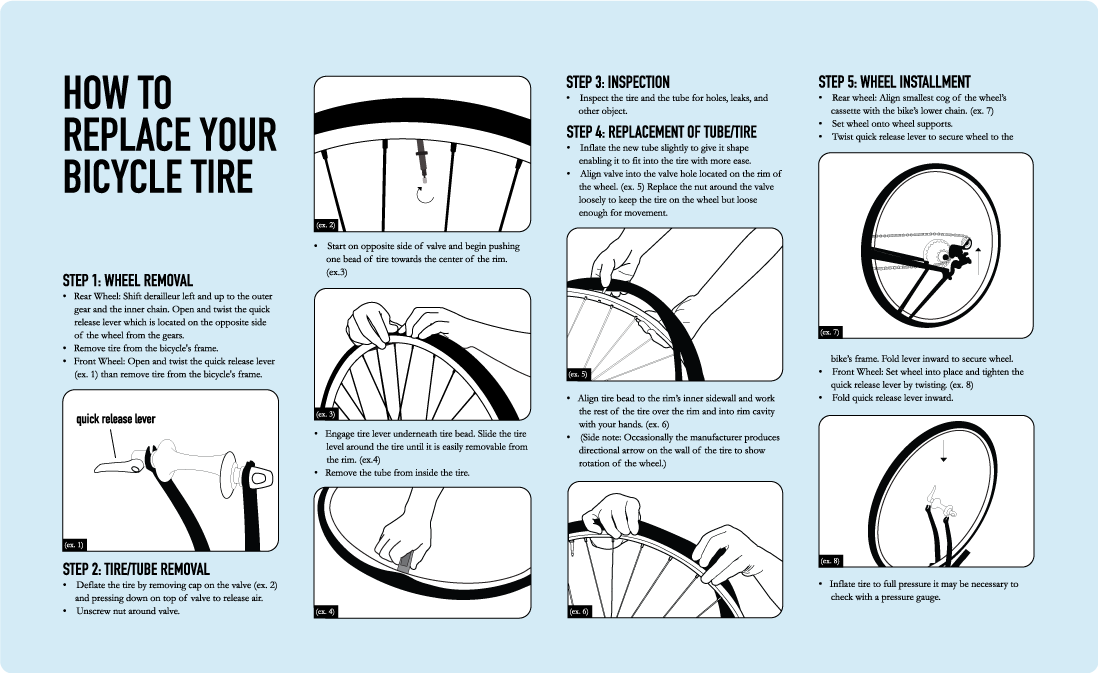
While driving with tire chains, listen for a loud sound of slapping, or metal on metal. If you hear any indication that a chain may be broken or hitting your car, STOP as soon as safely possible. Loose or broken chains that flap can wrap around a strut or shock component, causing big damage to your vehicle. To help prevent damage, here are a few tips for driving when you have winter chains installed on your vehicle.
Pull over in a safe location and remove the chains. Start by unhooking the bungee and chain from the guide, removing them from the tensioner. Unlatch the red hook, and then undo the blue and yellow cable connection. Once all of your chains are off and lying flat on the ground, pull backward or forward slowly a few feet so you can safely pick them up.
At the end of your trip, lay your chains out in the garage and let them dry. If you pack them wet, they can rust.
Also check them for wear, especially if you’ve driven them on asphalt for any distance. Look for flat spots, and replace the chains if you find some.
Link at left shows flattening from wear. Link in center shows sharp edge from wear that can damage a tire.
Remember, if you don’t use your chains all winter long, you can return them with proof of purchase to any Les Schwab for a full refund in the spring.
Get your next set of Quick-Fit chains, along with a few tips on how to install them, at your local Les Schwab, where doing the right thing matters.
Want more tips on winter road safety? See 19 Winter Driving Resources You Can’t Do Without.
Get More Winter Tips
Aquiline Tire Chain Installation InstructionsAquiline Tire Chains provide traction solutions in the most demanding conditions for truck, tractor, grader and loader applications. Installing chains for severe weather conditions.Installing today's snow chains is a fairly simple procedure, but it's a good idea to practice a little. Be sure to do a dry run before the weather gets bad so that you will understand how the chains fit on the tires. If you have never driven on tire chains before and you can find softer ground, such as a dirt road, a test drive with chains installed can prepare you for the differences chains make on your car. Chains on the back wheels will limit your steering somewhat, while chains on the front wheels can cause your car's rear-end to react irregularly. Snow Chain Guidelines
Which chain size do you need for your vehicle?The easiest way to determine which size chains you need is to look at your tires. Whether you’re looking for chains for a car, truck, tractor, ATV, or whatever, every tire should be stamped with its size on the sidewall. To purchase the correct size, chains should have matching specifications to the tire. For the size 255/70R15 the numbers refer to;
The wrong size chains can and will damage the sidewalls of your tires.This could cause a blow out of the tire and be instrumental in an accident. At the very least, it can cause frustration and inconvenience. Avoid renting chains as usually these are a one size fits all type of chain. As with having the wrong size, these too can cause damage to your tires. Many low-profile cars do not have the clearance for chains between the fender and the tire itself.Before purchasing any chains, be sure your car and tires can accommodate them. Also, check with your local officials to make sure that chains are allowed in your area, some municipalities require the use of snow tires instead of chains. Please refer to our article regarding state tire chain laws. Tire Chain FAQ'sWhat are tire chains?Sounds like an obvious question but it's one we get asked. Can you give me advice on how to put on tire chains?Our install page here: Installing Tire Chains gives advice and tips on how to install your chains, and most of our chain pages have an instructional how-to video at the bottom of the page as well, but if you can't see what you need then visit our youtube channel page for more instructional videos. What size tire chains do I need?Our helpful guide on our install page here: How to size chains gives you instructions on how to find the right chain to fit your tire. If you are looking for a chain to fit your ATV then contact us at (866) 437-5883. What advice can you give for driving in snow?See our page here: Driving in the snow for information about how to drive safer in snow and ice. Where to buy snow chainsWe ship internationally to most places, and shipping in the US is free, but if you are in the vicinity of Cedar Rapids, Iowa you can come by and purchase from our warehouse based at Cedar Rapids Tire. How much are snow chains?That pretty much depends on the vehicle you are driving and the style of chain you are looking for. Cable-based chains are usually cheaper than the heavier, and as a result stronger, linked chains. Chains designed for use on cars are also far cheaper than the large bulky chains used for tractors, graders, and other similar-sized vehicles. |
A chain is a flexible long product made up of links connected in series and movably. This ingenious invention of mankind in modern realities has not lost its former popularity and is widely used on ships, in ports, in logging, in cargo transportation, in production, in the mining industry, agriculture, everyday life, interiors and landscape design.
Chains are distinguished by purpose, design, material, link size, strength and many other features that determine the scope of their application. Among the huge variety of link structures, four main groups can be distinguished.
This group includes steel round link chains of normal strength with a caliber from 2 to 16 mm with welded links.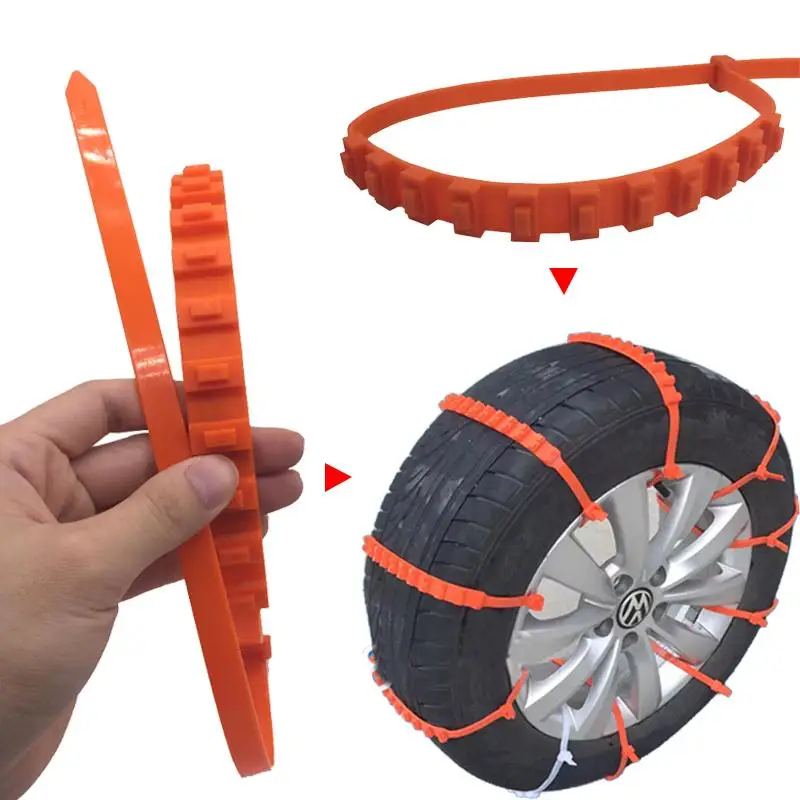 They are manufactured in accordance with DIN 763, DIN 5685 Form C (long link) and DIN 766, DIN 5685 Form A (short link) from grade 2 mild steel. and non-lifting loads. In the household, they are used to tie animals, raise well water, make swings. Chain branches, consisting of long links, have better mobility, but are inferior to analogues with a short link in strength.
They are manufactured in accordance with DIN 763, DIN 5685 Form C (long link) and DIN 766, DIN 5685 Form A (short link) from grade 2 mild steel. and non-lifting loads. In the household, they are used to tie animals, raise well water, make swings. Chain branches, consisting of long links, have better mobility, but are inferior to analogues with a short link in strength.
Comparison between short link and long link general purpose chain
These are products with quality class 2, 2.5, 3.5, 5, 7, 8, with a stress at a minimum breaking load of 240 to 800 N/mm². They go to the manufacture of chain slings and are used as part of various lifting and transport machines and mechanisms. With their help, overall and heavy loads are attached to water and land transport. They are mainly used with blocks and winches, for tying, suspension, lifting and holding loads; traction - for moving goods. Manufactured in accordance with GOST 2319or TU (manufacturer's internal standards).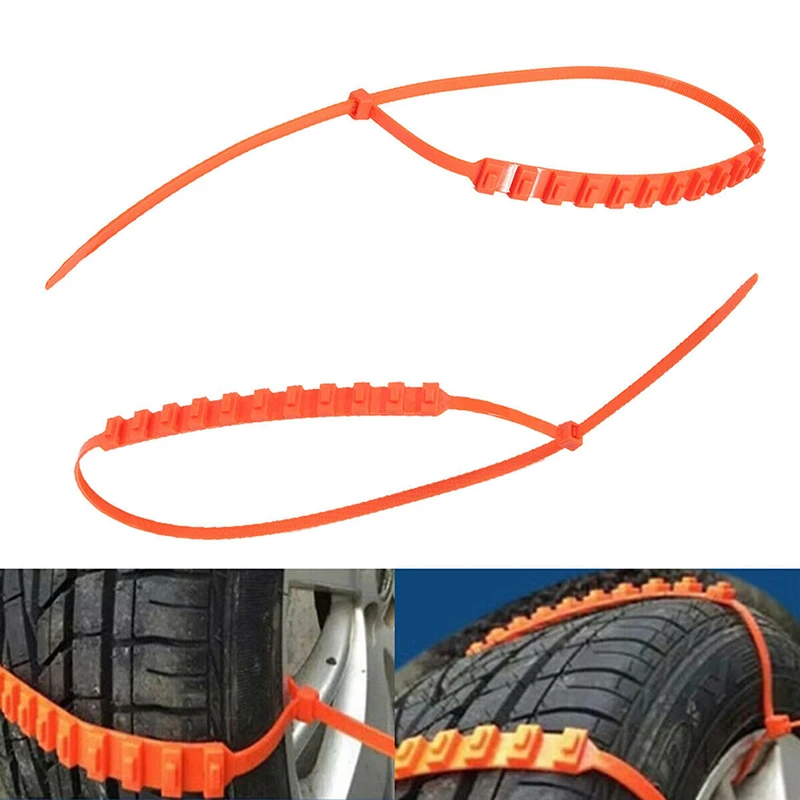
This group includes high-strength hardened chains of class T(8) with a tensile strength at breaking load of 800 N/mm² and above. They are made from a round steel bar with a section diameter of 4 to 20 mm from high-alloy steel. The place of closure of the rings is welded by electric welding and processed from the burr. Finished products undergo high temperature quenching to improve load capacity, fatigue strength, resistance to abrasive materials and excessive friction. Calibration of each link guarantees high accuracy of shapes and sizes and allows them to be used for work on sprockets of load-lifting and traction devices. Technical requirements for them establish standards GOST 30188-97 and GOST 25996 (for mining equipment).
This group of products impresses with a variety of shapes, sizes, colors and materials used, which implies many options for their application. Thanks to various coatings, they perfectly imitate non-ferrous and precious metals, which allows you to realize any creative idea in interior design and landscape design.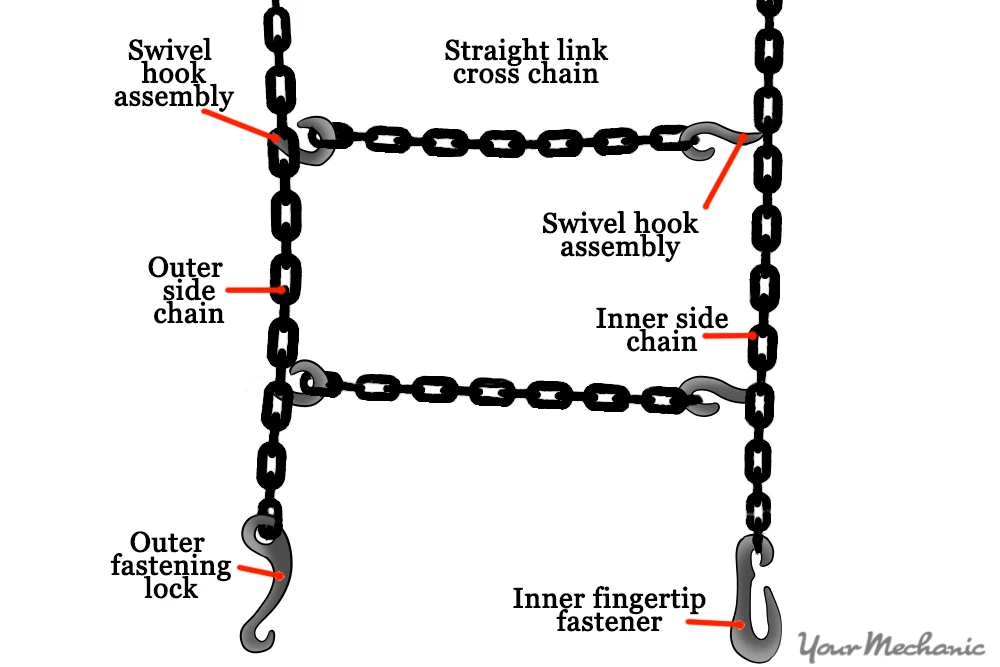 Decorative chains are often used by designers of costume jewelry, clothes and haberdashery. Plastic chains with links of bright signal colors are used for zoning public spaces, parking lots, sports grounds.
Decorative chains are often used by designers of costume jewelry, clothes and haberdashery. Plastic chains with links of bright signal colors are used for zoning public spaces, parking lots, sports grounds.
Step is the measurement of the internal length of each individual link. Manufacturers may use the letter "P" or t to indicate the pitch, for example P = 24 mm or t = 24.
Caliber is the nominal diameter (d) of the section of the round steel from which the links are made. Often, gauge refers to the size of the chain, such as 8 mm, 10 mm, 12 mm, etc. More often, however, the size designation includes caliber and pitch separated by a multiplication sign. For example: 6x19mm, 8x24 mm, 14x50 mm.
Depending on the pitch to gauge ratio, the chains are divided into:
When choosing a chain for certain applications, consumers often ask themselves: - "What is the difference between a short link and a long link chain, other than the obvious size of the links?"
The short link design (P/d < 3. 5) makes the chain easier to handle, less prone to tangling when stored in a storage container, but not as agile as a long link chain. Its main advantage is in terms of strength: with the same caliber, a chain with a short link can withstand greater loads than with a long link. It is more difficult to damage when tightening at sharp corners. Short links are tighter on the gripping hooks, so there is less risk of them slipping off.
5) makes the chain easier to handle, less prone to tangling when stored in a storage container, but not as agile as a long link chain. Its main advantage is in terms of strength: with the same caliber, a chain with a short link can withstand greater loads than with a long link. It is more difficult to damage when tightening at sharp corners. Short links are tighter on the gripping hooks, so there is less risk of them slipping off.
The long link construction (P/d ≥ 3.5) has a large degree of freedom in all directions and is better suited for fastening, extension, shortening. It is easy to make a loop out of it by threading a link into a link. But its main advantage over the short link is in less weight and price, since there are fewer rings per meter.
Conclusion: The type of chain must be selected depending on the tasks assigned to it. If mobility and weight are less important criteria than strength, then you should opt for a short link. In hoisting mechanisms with blocks and drums, only short-link chains are used for operation in order to prevent the occurrence of a large bending moment.
Important: When purchasing, make sure that the internal dimensions of the link are sufficient to pass a hook or other connecting elements (shackles, rings, carabiners, eyelets, etc.) through it.
Round link chains are divided into:
The calibrated chain is made of round calibrated steel and has a high accuracy of execution within the specified strict tolerance for pitch, section diameter, link width, external and internal length. The maximum deviation from the regulated dimensions is ± 3%. Calibrated chains after heat treatment are necessarily subjected to tension by a calibration load in order to obtain the specified maximum deviations of the pitch and length of the segment.
Uncalibrated chains have a rated tolerance of ±10%, therefore they are designed to work on smooth drums or in static fastening systems.
A calibrated chain is used as a flexible lifting and traction body for chain conveyors, elevators, winches, hoists and other mechanisms with gear drums or chain sprockets. It works as part of bucket conveyors, lifting equipment, traction and lifting mechanisms with manual and mechanical drives. Sprockets or drums are usually designed and manufactured to ensure compatibility with a given chain size and gauge for optimum engagement.
Note: Both types of chains can be used as load chains.
It's not enough to get the gauge and pitch right, it's important that the chain is calibrated to tight tolerances or it will "bounce" under load. When the link pitch has deviations from tolerances of more than 3%, this is difficult to determine visually, but is easily confirmed in practical tests. A slippage or sticking problem usually occurs after the chain has gone through a few turns under load.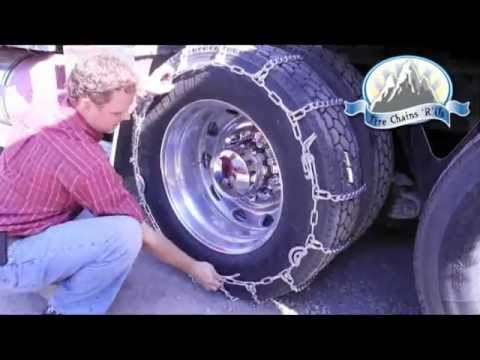
If you are looking for a calibrated winch chain and are unsure of the quality of the sizing, there is an easy way to check that it matches the tolerance limits for your winch drum.
To do this, you need to buy a meter length of the chain branch and measure the length of 11 links. Why exactly 11 links? – because it is a generally accepted standard length. Use a ruler to measure the distance from the inside of the first link to the inside of the last link. When doing this, make sure the chain is taut to ensure an accurate measurement.
Important! The maximum pitch deviation for a calibrated chain must not exceed ±3% of the specified value!
Table 1. Normal measurement results for a calibrated short link chain DIN 766
| Caliber, mm | Pitch, mm | Length 11 links, mm |
| 6 | 18. 5 5 | 203.5 |
| 7 | 22 | 242 |
| eight | 24 | 264 |
| ten | 28 | 308 |
| 12 | 36 | 396 |
| 13 | 36 | 396 |
Tip: For European-made anchor winches, choose calibrated DIN 766 short link chains as they will fit perfectly on the drums mounted on them.
In the characteristics of the product, manufacturers indicate three types of load. The maximum working loads are based on proof tests and should never exceed the rated working loads suggested by the chain manufacturer, individual specifications or testing agency for the chain size and grade in question.
Working load (carrying capacity) - the maximum load that the product can be subjected to during operation. It is the breaking load divided by the safety factor. This coefficient varies from 3 to 8 depending on the purpose of the chain and the manufacturer. Usually it is 4, in which case the working load is a quarter of the breaking load.
It is the breaking load divided by the safety factor. This coefficient varies from 3 to 8 depending on the purpose of the chain and the manufacturer. Usually it is 4, in which case the working load is a quarter of the breaking load.
The proof load is the reference tensile test load that was loaded on the specimen at the factory during the test procedure. Typically, it is twice the ultimate working load, which is half the breaking load. This is a very important test, proving that each link has been welded well.
Breaking load is the ultimate tensile strength of 4 times the working load limit. Standards require a specific level of breaking load for each chain size, gauge and grade. For some manufacturers, it may exceed the minimum standard, which is reflected in the test certificate.
When choosing a welded round link chain for the lifting mechanism, a simple calculation is performed for a given load and safety factor.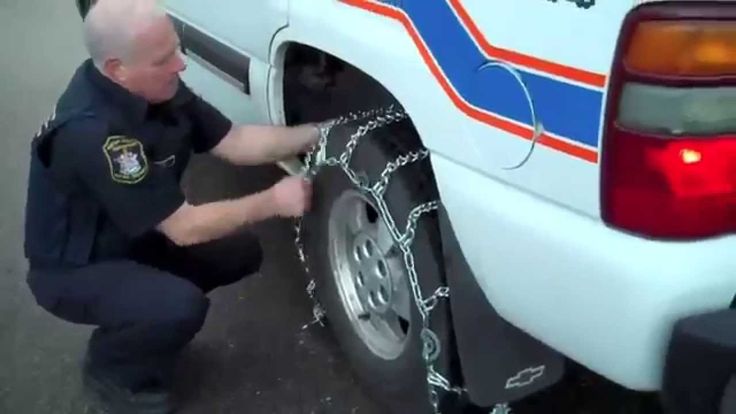
For example: For a manual hoist, the size of the calibrated chain must be selected. Assumed maximum working load: S = 12 kN (1200 kgf).
In accordance with the standards of Gostekhnadzor, we accept a margin of safety equal to 4.5: 1.
We calculate the breaking load according to the formula P = 4.5 x 12 kN = 54 kN (5400 kgf) .
According to table 2 (source: GOST 2319-81), we select a short-link calibrated chain of size 13x36 mm, for which the tensile strength is 66 kN (6600 kgf).
Table 2. Dimensions and loads for load and haul chains, type A, version 1
| Caliber, d mm | Pitch, p mm | Width b mm | Previous deviation section length l=11p | Load, kN | ||||
| nominal | prev.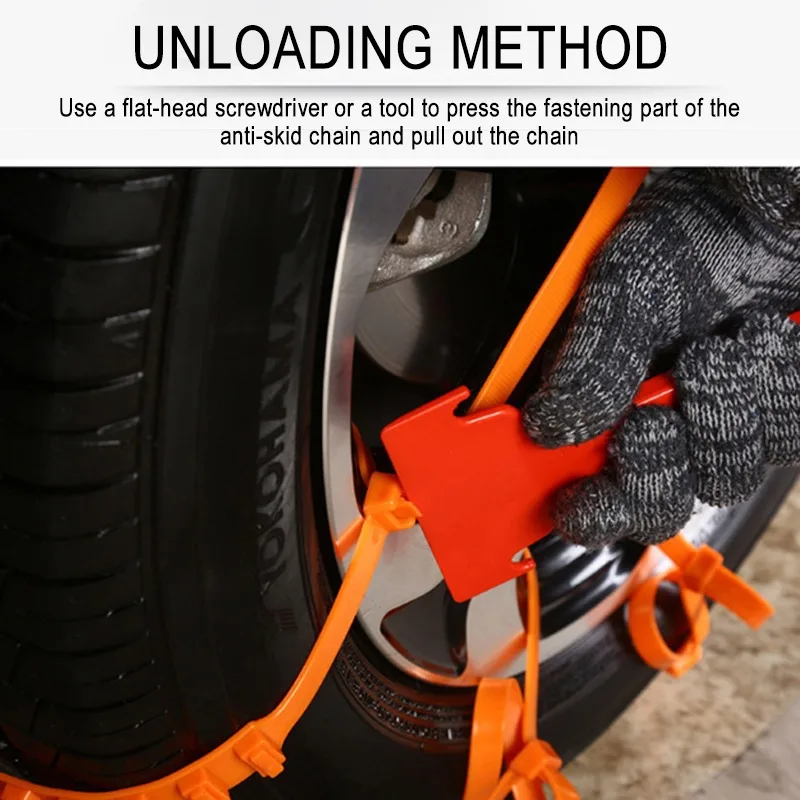 deviation deviation | nominal | prev.deviation | nominal | prev.deviation | trial | destructive | |
| 5 | ±0.4 | 18.5 | ±0.5 | 17 | ±0.5 | +1.5 -0.5 | 5.0 | 10.0 |
| 6 | 18.5 (19) | 20 (21) | ±0.6 | 7.0 | 14.0 | |||
| 7 | 22 | 23 | ±0.7 | 9.0 | 18.0 | |||
| eight | 23 (24) | ±0.6 | 26 (27) | ±0.8 | 13.0 | 26.0 | ||
| 9 | ±0.5 | 27 | 32 | ±0.9 | +2.5 -0.8 | 16.0 | 32.0 | |
9. 5 5 | 27 | 31 | ±1.0 | 17.0 | 34.0 | |||
| ten | 28 | 34 | ±1.1 | 20.0 | 40.0 | |||
| eleven | 31 | ±1.0 | 36 | ±1.3 | 23.0 | 46.0 | ||
| 13 | 36 | 44 (43) | ±1.6 | +3.8 -1.3 | 33.0 | 66.0 | ||
| 16 | ±0.8 | 45 (44 | 53 (54) | ±1.8 | 51.0 | 102.0 | ||
| eighteen | fifty | 60 | ±2.0 | 63.0 | 126.0 | |||
| twenty | 56 | ±1.5 | 67 | ±2.3 | +5.5 -1.8 | 80.0 | 160. 0 0 | |
| 23 | ±1.0 | 64 | 77 | ±2.6 | 100.0 | 200.0 | ||
| 26 | 73 | ±2.0 | 87 | - | - | 126.0 | 252.0 | |
| 28 | 78 | - | 94 | - | - | 150.0 | 300.0 | |
| thirty | 84 | - | 101 | - | - | 170.0 | 340.0 | |
| 33 | ±1.5 | 92 | - | 112 | - | - | 200.0 | 400.0 |
| 36 | 101 | - | 122 | - | - | 250.0 | 500.0 | |
| 39 | 109 | - | 132 | - | - | 280.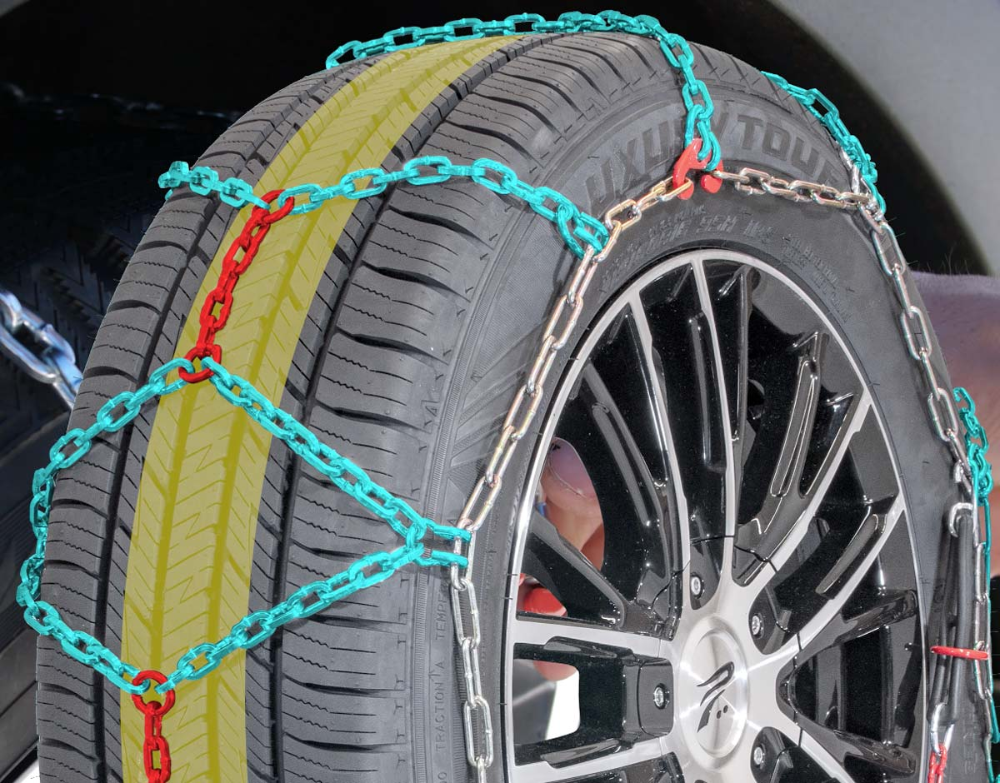 0 0 | 560.0 | |
| 42 | 118 | - | 142 | - | - | 340.0 | 680.0 | |
Quality class is a characteristic that allows you to evaluate the strength of the chain. It depends on the mechanical characteristics of the finished product, and not on the ultimate strength of the alloy used for its manufacture. The quality class is usually indicated by numbers from 2 to 12. Some standards, for example, GOST 29996-97, establish the letter designation of the class - B, C, D.
Chains of normal strength (cargo, traction and general purpose), depending on the mechanical properties, have the appropriate quality class - 2; 2.5; 3; 3.5; 5; 7, and high-strength (lifting) class 8, 10, 12 (T8, T10, T12).
Table 3. Strength values for chains of various quality grades
| Quality class | 2 | 2.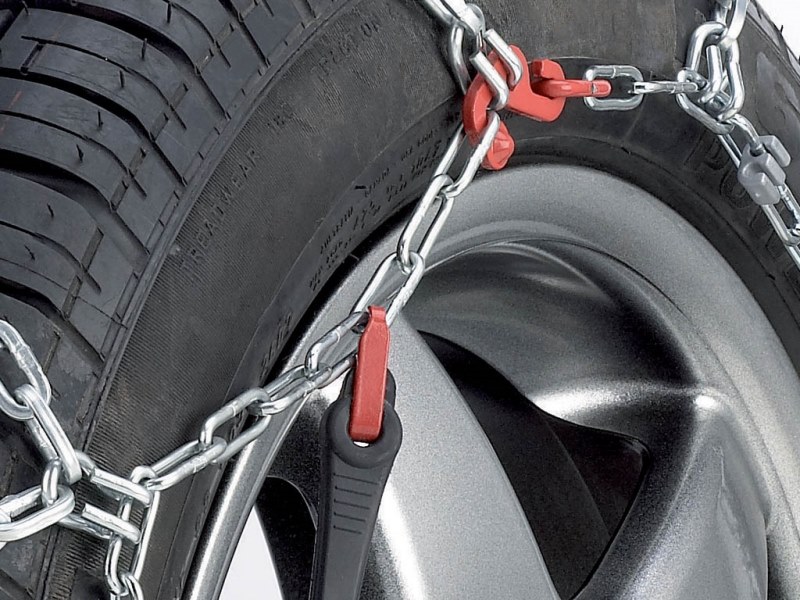 5 5 | 3.5 | 5 | B | 7 | 8(C) | 10(D) |
| Test load stress, N/mm | 75-120 | 120 | 240 | 315 | 500 | 600 | 640 | 800 |
| Tension under breaking load, N/mm | 150-240 | 240 | 360 | 500 | 630 | 750 | 800 | 1000 |
With the same nominal diameter of the links, the load capacity of the chain of the 8th quality class is 50% higher than the load capacity of the chains of the 5th quality class, and the load capacity of class 10 chains is 25% higher than that of products of quality class 8. Accordingly, the load capacity of class 12 is 25% higher than class 10.
The use of high-strength chains in lifting and rigging operations allows you to reduce the weight of chain slings.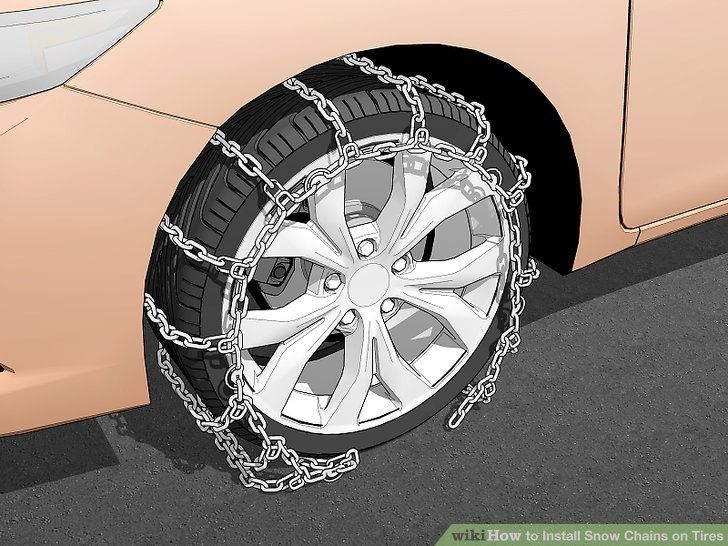 With equal load capacity, the weight of the chain of the 8th quality class is 30% of the weight of the 3rd class. The higher the quality class, the higher the surface hardness of the bows and the higher the wear resistance and susceptibility to damage from sharp edges.
With equal load capacity, the weight of the chain of the 8th quality class is 30% of the weight of the 3rd class. The higher the quality class, the higher the surface hardness of the bows and the higher the wear resistance and susceptibility to damage from sharp edges.
Their carrying capacity remains stable when operating in the temperature range from -40 to +200ºС. With an increase in temperature to +300ºС, the workload drops by 10%, and when it rises to +400ºС, it decreases by 25%. If the threshold of +400ºС is exceeded, operation is prohibited.
To ensure the stability of the car when driving on ice, loose soils and snowy winter roads, snow chains are used. These are ready-made chain products that are put on the wheels of cars and make it easy to overcome even the most impassable areas. For their manufacture, high-strength hardened galvanized steel is used, which guarantees special resistance to abrasion, reliability and durability.
The range of snow chains covers almost all possible wheel sizes. The special pattern of the ladder, diamond or honeycomb chain tread provides optimal grip and comfortable movement.
On finished chain protectors, manufacturers indicate the size of the tires and the type of vehicle for which they are intended. For those who plan to make wheel chains with their own hands, we recommend using the following gauge and link pitch:
Chain consumption depends on the wheel diameter, tread width and profile height of the tire, as well as on the selected pattern. For example, to “shod” two wheels of a passenger car in lugs with a “ladder” pattern, approximately 15 meters will be required.
One of the most reliable ways to protect an unattended motorcycle or bicycle from theft is a bike chain lock.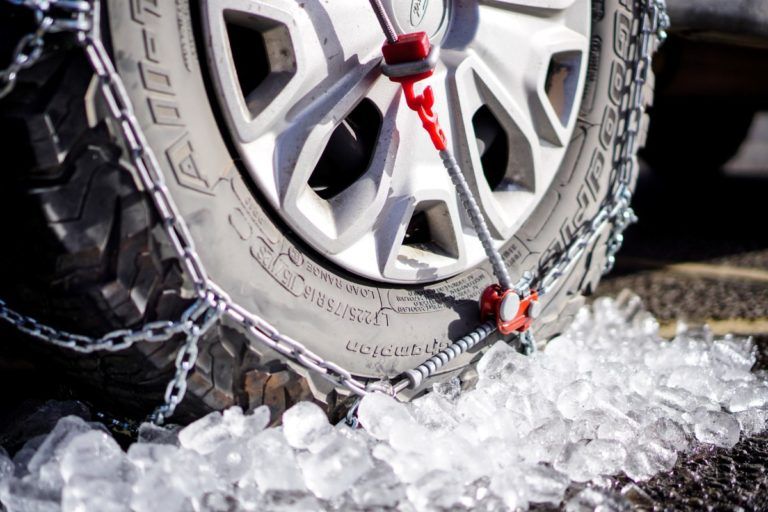 It's easy to do it yourself. To do this, you will need a piece of chain and a padlock (with a key or combination). You should not look for an old chain in the garage or purchase it at a hardware store. For an anti-theft chain-lock, you need not an economic, but a high-strength solid hardened chain.
It's easy to do it yourself. To do this, you will need a piece of chain and a padlock (with a key or combination). You should not look for an old chain in the garage or purchase it at a hardware store. For an anti-theft chain-lock, you need not an economic, but a high-strength solid hardened chain.
The anti-theft chain is made of thermally hardened steel and has an increased strength class T-8. It is difficult to cut it and it is almost impossible to bite even with a powerful bolt cutter. And not every thief carries hydraulic scissors or a grinder in his pocket. The chain links are firmly welded, so they cannot be unbent with wrenches. Even experienced hijackers will have to tinker with such a chain, and this will give you time or the attacker will look for another, less secure candidate for hijacking.
Leaving a two-wheeled "horse" in a temporary parking lot, it must be fastened to something immovable and indestructible (pole, tree, fence), and the chain must wrap around not only the wheel, but also the frame. Otherwise, a surprise will await you in the form of a lone chained wheel. Depending on what you will fasten your bike or motorcycle to, the length of the chain can vary from 60 to 120 cm. As for the diameter of the chain bar, it can be 8 mm, 10 mm or 13 mm. As practice shows, the larger the caliber of the link, the less chance the hijacker has.
Otherwise, a surprise will await you in the form of a lone chained wheel. Depending on what you will fasten your bike or motorcycle to, the length of the chain can vary from 60 to 120 cm. As for the diameter of the chain bar, it can be 8 mm, 10 mm or 13 mm. As practice shows, the larger the caliber of the link, the less chance the hijacker has.
If the chain is not in doubt about the reliability, then the weak link in this anti-theft device may be the lock. Time is important for a thief, so he is unlikely to start poking around in the castle when you can just bite his shackle. Therefore, the locking shackle of the lock must be no less strong than the chain links.
The assortment of the Krepkom store always has hardened chains of any caliber and chain locks with a high degree of protection against opening, breaking, sawing and corrosion. Instead of a bow-shaped bracket, the locks have a thick locking pin made of extra strong hardened steel. It is difficult to get close to it with wire cutters, a mount or a hacksaw, which makes it difficult to break in by force.
The Krepkom store offers a wide range of chains for various purposes and finished products from them (household, sanitary, decorative chains, knot, ball, anti-skid chains, for tying livestock and slipway repair, etc.). If you have any questions when choosing, our specialists are ready to advise you by phone: +8 (800) 333-21-68.
Chains, slings, rigging Updated: 08/02/2022 13:17:31
Maxim
Specialist in the field of fasteners and rigging products. More than 10 years of work in the field of construction, repair and equipment.
— "We try to convey to you only relevant and reliable information, we will be glad to hear your feedback regarding this article"
The author of the article
Maxim
Specialist in the field of fasteners and rigging products. More than 10 years of work in the field of construction, repair and equipment.
— "We try to convey to you only relevant and reliable information, we will be glad to hear your feedback regarding this article"
The author of the article
Rate
Submitted successfully, Thank you for rating!
Click to rate
Pewag products are suitable for a wide range of tire types and sizes. Thanks to modern technology, the company designs and manufactures chains that guarantee maximum safety and comfort in all weather conditions, thus ensuring safety on the road. Better grip on snow and ice increases flotation on the road and shortens the braking distance.
Thanks to modern technology, the company designs and manufactures chains that guarantee maximum safety and comfort in all weather conditions, thus ensuring safety on the road. Better grip on snow and ice increases flotation on the road and shortens the braking distance.
Pewag chains can be used not only in winter. Wheel chains are used while driving on clay, sand, and also on scree. Soldiers and rescuers rely on the proven quality of Pewag snow chains, even off-road.
Our chains comply with the ÖNORM V 5117 standard and, depending on the link thickness, they are suitable for use in small and narrow wheel arches as well as on wheels with aluminum rims. For vehicles with small clearance between the wheel and the car body, snow chains with small links of 7 or 9 mm, which are also available from Pewag, are suitable.
Our snow chain configurator will help you choose the right model for tires for cars, trucks, tractors, lawn mowers and other equipment. The required spare parts can be found in the dedicated section.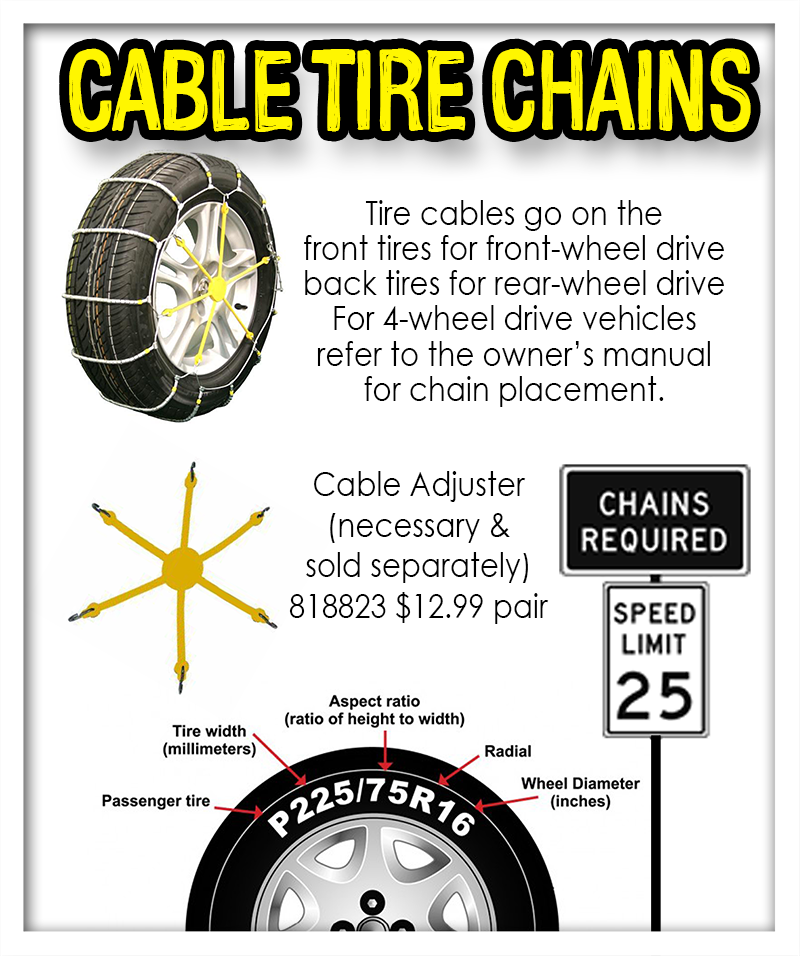
In our assortment, you will always find the right snow chains for your tire and rim size, tire type (summer or winter) and vehicle type. Usually, the wheel diameter and tire width, as well as the size of the rim, are the determining factors when choosing snow chains. In addition, in many modern cars, the distance between the wheel and the body is very small. When choosing the right chain for larger tires, it is also important to consider the specific manufacturer (Michelin, Continental, Pirelli and others).
Use the search for in the menu bar or use the snow chain configurator on this page.
Electric vehicles will also need snow chains for driving in winter, you can find the chains you need for them by searching on our website. However, the use of snow chains is not limited to winter. They can also come in handy in the summer on particularly muddy roads or in the woods.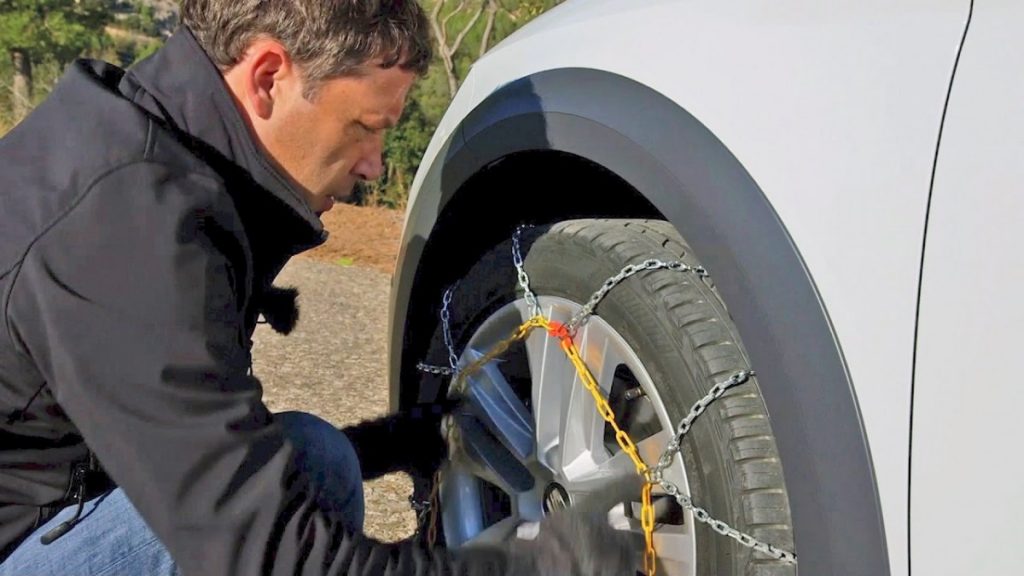
Our chains are sold in pairs (2 per pack). They are installed on the left and right side of the car. Two snow chains (one pair) are usually enough for a completely reliable grip even on all-wheel drive vehicles.
Depending on the type of snow chain, it may be necessary to install one or two stops correctly in order to install it on the vehicle. For a snug fit, the chain must be tightened, this is done taking into account the design of the tension system (manual, automatic or semi-automatic). Some chains (for example, in the Pewag Snox or Servo model lines) are tensioned automatically, so an additional limiter is not required after the initial installation.
Our product pages include installation videos for each product as well as helpful installation instructions. In addition, before the trip, we recommend that you try to install snow chains yourself once in order to be well prepared in case of an emergency.